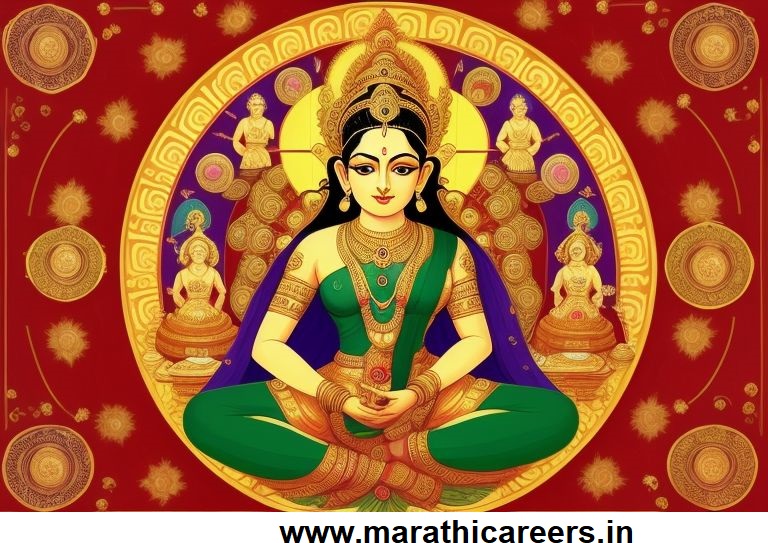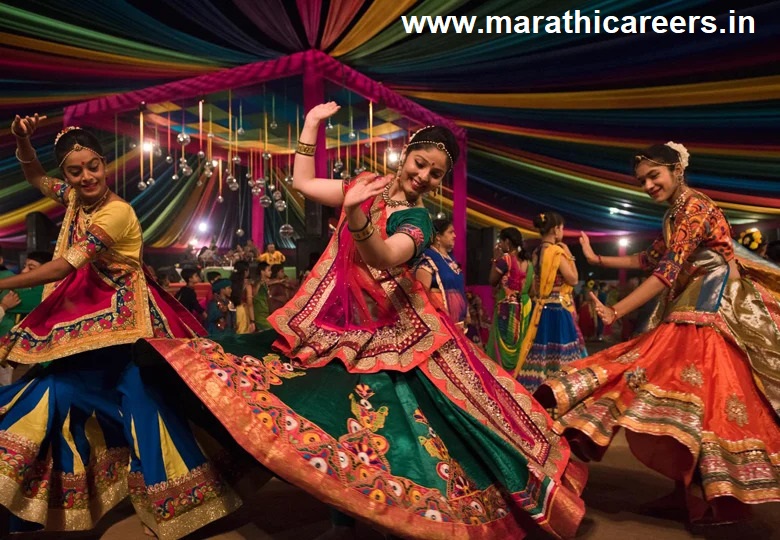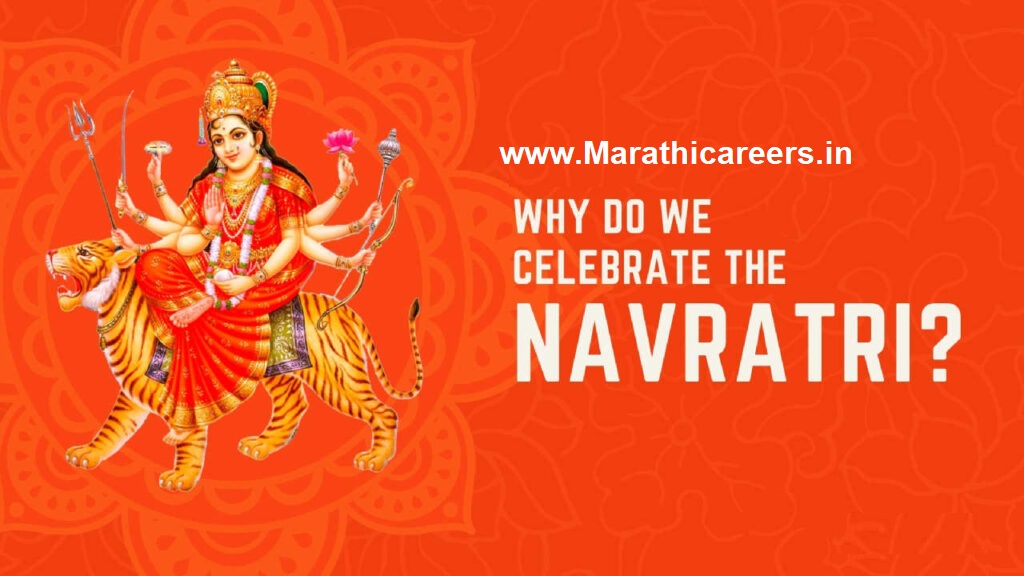Navratri is one of the most celebrated Hindu festivals, revered for its spiritual depth, vibrant celebrations, and profound cultural significance. The word “Navratri” comes from Sanskrit, where “Nav” means nine and “Ratri” means night. Over these nine nights, devotees worship the nine forms of Goddess Durga, each symbolizing unique virtues and powers.
But why Navratri is celebrated holds deeper meanings rooted in mythology, spirituality, and cultural traditions.
Why Do We Celebrate Navratri? The Mythological Roots
The celebration of Navratri is primarily associated with two significant mythological stories. The first is the legend of Goddess Durga’s victory over the demon Mahishasura, symbolizing the triumph of good over evil. According to this legend, Mahishasura, a powerful demon, received a boon from Lord Brahma that no man or god could kill him. Empowered by this boon, he began wreaking havoc in the three worlds. To end his tyranny, Goddess Durga was created by the combined energies of all gods. After a fierce battle lasting nine nights, Durga defeated Mahishasura on the tenth day, known as Vijayadashami or Dussehra.

The second story revolves around Lord Rama’s worship of Goddess Durga before his battle against Ravana. It is believed that Rama invoked the blessings of Durga for strength and victory. This victory, which culminated in Ravana’s defeat, is celebrated as Dussehra, marking the end of Navratri.
When Does Navratri Start? Key Dates and Celebrations
Navratri is celebrated twice a year—in the spring (Chaitra Navratri) and in the autumn (Sharad Navratri). In 2024, Sharad Navratri will start on October 3rd and end on October 12th. But if you’re wondering when Navratri starts in April 2024, the Chaitra Navratri will commence on April 9th and conclude on April 18th. Both these Navratris hold immense importance, with devotees observing fasts, performing rituals, and participating in cultural festivities.
Today Which Colour of Navratri? The Significance of Each Day’s Colour
Each day of Navratri is associated with a specific color, symbolizing a particular form of Goddess Durga. Devotees wear these colors to honor the goddess and imbibe the positive energies associated with them. Here is a breakdown of the colors and their significance:
- Day 1 (Pratipada): Yellow – Symbolizes joy and cheerfulness.
- Day 2 (Dwitiya): Green – Represents growth and harmony.
- Day 3 (Tritiya): Grey – Signifies balance and neutrality.
- Day 4 (Chaturthi): Orange – Denotes energy and enthusiasm.
- Day 5 (Panchami): White – Stands for purity and peace.
- Day 6 (Shashti): Red – Symbolizes strength and courage.
- Day 7 (Saptami): Blue – Represents divinity and wisdom.
- Day 8 (Ashtami): Pink – Symbolizes compassion and universal love.
- Day 9 (Navami): Purple – Denotes spirituality and transformation.
When to Break Navratri Fast: A Guide for Devotees
Fasting is a significant aspect of Navratri celebrations, observed by devotees as a means of purification and devotion. The fast is usually broken on the ninth or tenth day of Navratri. The time and rituals for breaking the fast, known as “Paran,” vary according to regional customs. Generally, the fast is broken after performing Kanya Puja, a ritual where nine young girls are worshipped as manifestations of the goddess. This is followed by offering them food and gifts, symbolizing the culmination of the devotee’s penance and prayers.

When Navratri Start in April 2024? Important Dates to Remember
In 2024, Chaitra Navratri will begin on April 9th and conclude on April 18th. Chaitra Navratri marks the beginning of the Hindu New Year and is celebrated with great fervor, especially in North India. The first day is known as Gudi Padwa in Maharashtra, Ugadi in Andhra Pradesh and Karnataka, and Navreh in Kashmir. Each day is dedicated to a different form of the goddess, and the celebrations are similar to those of Sharad Navratri, with rituals, fasting, and cultural programs.
Why Navratri is Celebrated: The Spiritual Perspective
Navratri is not just a religious festival; it holds deep spiritual significance. It is a time for inner cleansing, self-discipline, and connecting with the divine. Each day of Navratri is dedicated to the worship of a different form of Goddess Durga, representing various aspects of life such as courage, wisdom, purity, and strength. Devotees believe that by worshipping these forms, they can overcome personal difficulties, purify their minds, and invite prosperity into their lives.
Today is Which Day of Navratri? Understanding the Navratri Calendar
Keeping track of which day it is during Navratri is important for performing the right rituals and wearing the correct colors. Each day has its own significance, and devotees often follow the Navratri calendar to ensure they are in sync with the prescribed traditions and practices. For instance, on the eighth day, known as Ashtami, devotees perform the Kanya Puja, while the ninth day, Navami, is often reserved for special prayers and offerings to conclude the festival.
Cultural and Social Significance of Navratri
Navratri is not only a religious festival but also a cultural extravaganza. Across India, it is celebrated with various forms of art, music, and dance. The most popular are the Garba and Dandiya Raas, traditional dances performed in Gujarat and Maharashtra. People dress in vibrant traditional attire and dance in large groups, creating a lively and joyous atmosphere.
In West Bengal, Navratri coincides with Durga Puja, where beautifully crafted idols of Goddess Durga are worshipped in elaborately decorated pandals. The last day, known as Vijayadashami, is marked by immersing the idols in water bodies, symbolizing the departure of the goddess to her heavenly abode.
Why Do We Celebrate Navratri? Beyond Mythology
While the mythological stories form the basis of why Navratri is celebrated, the festival also embodies the essence of life’s victories and the power of resilience. It teaches us that with faith, courage, and righteousness, we can overcome any adversity. The festival encourages introspection and self-improvement, motivating individuals to adopt qualities that the goddess represents.
गंगा दशहरा कब है 2024: तिथि, महत्त्व, और पूजा विधि
Navratri Rituals: How is Navratri Celebrated Across India?
Navratri rituals vary from region to region, but certain practices are common throughout. Each day, devotees perform rituals such as Ghatasthapana, where a pot symbolizing the goddess’s presence is installed. Offerings of flowers, fruits, and sweets are made, accompanied by chanting mantras and hymns. Many devotees read the Durga Saptashati, a text narrating the stories of the goddess’s victories over various demons.
दशहरा कब है 2024: तिथि, महत्त्व और इतिहास
In South India, Navratri is celebrated as Golu, where artistic displays of dolls and idols are set up in homes. Friends and families visit each other, exchanging sweets and gifts, making it a time of social bonding.

Navratri 2024: What to Expect?
Navratri 2024 will be celebrated with renewed enthusiasm after the restrictions of the past years. Devotees can expect grand celebrations, vibrant markets, and community events that bring people together. The focus will remain on devotion, with traditional rituals, fasts, and prayers, but the festive spirit will be complemented by cultural programs, musical performances, and dance events that showcase the rich heritage of India.
When to Break Navratri Fast: Dos and Don’ts
While breaking the Navratri fast, it is important to follow some guidelines to ensure that the body smoothly transitions from a fasting to a regular diet. Begin with light foods such as fruits and yogurt, gradually introducing grains and other items. Avoid overeating or consuming heavy, oily foods immediately after the fast, as this can cause digestive issues.
FAQs on Why Navratri is Celebrated
Why is Navratri celebrated twice a year?
What is the purpose of fasting during Navratri?
When is Navratri 2024 starting?
Why are different colors worn each day of Navratri?
When to break Navratri fast?
How is Navratri different from Durga Puja?
Conclusion: Embracing the Spirit of Navratri
Navratri is a time of joy, devotion, and spiritual renewal. Programmiermuster It celebrates the eternal truth that good always triumphs over evil and that the divine feminine energy guides us in overcoming challenges. As you prepare to celebrate Navratri 2024, may the blessings of Goddess Durga fill your life with strength, prosperity, and happiness.
Navratri Kab Hai: 2024 में नवरात्रि की तिथियां, महत्व और पूजा विधि
